Do Flashlight Batteries Lose Power When Left Inside
It’s a question many flashlight owners have pondered: do batteries lose power just by sitting inside a flashlight? While it might seem harmless to leave them in until the next time you need your flashlight, this small habit could have significant implications for your device’s performance and longevity. This article explores what really happens when you leave batteries in your flashlight, why it matters, and how it connects to concepts like the hedge battery approach to energy management.
- Hedge Battery Basics and Their Connection to Flashlight Power Loss
- Hedge Battery Strategy for Home Energy Resilience
- Hedge Battery Management for Everyday Devices
- Choosing the Right Flashlight for a Hedge Battery Setup
- Hedge Battery Planning Tips for Battery-Powered Devices
Whether you're a casual user, an outdoor enthusiast, or someone preparing for emergencies, understanding battery behavior is crucial. And with the rise of technologies like the hedge battery system, knowing how batteries function over time is more relevant than ever.
Hedge Battery Basics and Their Connection to Flashlight Power Loss
What Is a Hedge Battery?
Before diving deep into flashlight batteries, it helps to understand the term "hedge battery." A hedge battery refers to a strategic reserve of battery storage, typically used in energy systems to manage risk and unpredictability—similar to how a financial hedge protects against market volatility.
While the term is most commonly used in larger energy systems, the principles apply at a smaller scale too, including household battery usage. Think of your flashlight’s batteries as a micro version of a hedge battery system: stored energy waiting to be deployed when needed.
How This Applies to Flashlights
Leaving batteries inside a flashlight can compromise your hedge battery strategy at home. If batteries degrade or leak while unused, you're essentially losing stored energy—undermining your preparedness for power outages or emergencies.
How Batteries Work Inside a Flashlight
Chemical Energy and Discharge
Batteries function by converting chemical energy into electrical energy. Even when not in active use, most types of batteries undergo a slow internal chemical reaction called self-discharge. This means energy loss can occur even when your flashlight is turned off.
Standby Drain vs. Active Use
It’s important to distinguish between active use—when the flashlight is turned on—and standby drain, which happens when the device is off. Some flashlights, particularly those with electronic features like digital switches or battery indicators, still draw small amounts of current even when powered down.
Hedge Battery Strategy for Home Energy Resilience
A smart hedge battery strategy isn't just about solar panels or smart home batteries. It’s also about the smaller components—like flashlights and portable power banks—that ensure resilience in unexpected moments.
By understanding how and when your batteries drain, you can apply hedge battery principles at home, ensuring that your energy reserves—big or small—are always ready when needed.
>>See also Is the Battery Industry a Lucrative Opportunity
Common Types of Flashlight Batteries and Their Behaviors
Alkaline Batteries
Alkaline batteries are the most common and also the most prone to leakage over time. When left inside a flashlight, they can corrode and damage the internal components. The typical shelf life is 5-10 years if stored properly, but this can reduce drastically inside a flashlight due to temperature variations and residual current draw.
Lithium Batteries
Lithium batteries offer better shelf life, higher energy density, and greater temperature tolerance. They self-discharge at a slower rate, making them a better fit for hedge battery setups, especially for emergency gear. However, they are more expensive and can be sensitive to over-discharge.
Rechargeable NiMH Batteries
Nickel-metal hydride (NiMH) batteries are eco-friendly and reusable but have a higher self-discharge rate than lithium batteries. Newer low self-discharge versions (like Eneloop) are better suited for flashlight use and for maintaining a hedge battery system over time.
What Happens When You Leave Batteries in a Flashlight
Battery Leakage
Perhaps the most damaging consequence is battery leakage. Alkaline batteries in particular can leak potassium hydroxide, which can corrode circuits, buttons, and contacts inside the flashlight. This is often irreversible and renders your device useless.
Power Drain Over Time
Even if no leakage occurs, batteries slowly lose charge through self-discharge. The rate depends on the type, brand, age, and temperature. A warm environment will accelerate this process, especially in flashlights stored in cars, attics, or garages.
Shortened Battery Lifespan
Storing batteries inside a device can lead to a shortened lifespan, especially if the flashlight draws a tiny current even when off. Over time, this reduces their capacity and reliability.
Hedge Battery Management for Everyday Devices
Applying a hedge battery mindset can dramatically improve how you store and manage your flashlight batteries:
1.Remove batteries from infrequently used flashlights.
2.Store spare batteries in a cool, dry place.
3.Label battery insertion dates.
4.Rotate batteries periodically, especially in emergency kits.
5.Use smart chargers for rechargeables.
In essence, your flashlight can act as a mini hedge battery device—just make sure it’s managed with the same care as any other energy storage unit.
Flashlight Battery Myths Debunked
Myth 1: Batteries Don’t Drain When Not in Use
False. All batteries experience some form of self-discharge. The only question is how fast.
Myth 2: It’s Fine to Store Flashlights with Batteries
Not always. Unless you’re using a flashlight regularly or have a power outage plan in place, it’s best to store batteries separately.
Myth 3: All Battery Types Behave the Same
Completely false. As discussed, alkaline, lithium, and NiMH all have unique discharge rates and storage behaviors. Hedge battery strategies should adapt accordingly.
Best Practices for Long-Term Flashlight Storage
Remove Batteries After Use
This is especially important if the flashlight will sit unused for months. Even if you plan to use it later, remove the batteries unless you’ll need them soon.
Store in Controlled Conditions
Temperature plays a huge role in battery longevity. Flashlights stored in hot environments can see accelerated drain and potential leakage.
Keep Emergency Kits Updated
If you’re using flashlights in your emergency hedge battery setup, check them every 3–6 months. Swap out batteries, test functionality, and look for signs of corrosion.
Choosing the Right Flashlight for a Hedge Battery Setup
If you're designing a home energy resilience strategy that includes hedge battery principles, consider flashlights with the following features:
Low standby drain: Avoid models with digital screens or electronic switches.
Battery lockout mode: Some high-end models have a physical lockout that stops all current flow.
Compatibility with multiple battery types: Flexibility can be crucial in emergencies.
Robust build and waterproofing: Protects against weather and leakage damage.
Can Smart Flashlights Prevent Power Drain?
Smart flashlights offer features like battery status monitors and automatic shutoff. While convenient, these features may draw power even when the flashlight is off. For hedge battery-style storage, simplicity is often better—no frills means fewer opportunities for parasitic drain.
If you choose a smart flashlight, test it first. Leave batteries in and measure charge loss over time using a multimeter. This can inform whether it's suited to your hedge battery reserve or better used for daily carry.
Hedge Battery Planning Tips for Battery-Powered Devices
A hedge battery system is only as strong as its weakest component. Here’s how to integrate flashlights effectively:
1.Build redundancy: Have more than one flashlight per person.
2.Use varied battery types: Store devices with both AA, AAA, and CR123A batteries.
3.Monitor expiration dates.
4.Invest in quality batteries and flashlights.
5.Train your household: Ensure everyone knows where and how to access flashlights in an emergency.
>>See also How to Tell if a Smart UPS 2200 Battery Can Be Replaced While Powered On
Real-World Example: Emergency Kits and Battery Drain
Consider an emergency kit prepared for a 6-month power outage scenario. If you leave alkaline batteries inside the flashlight, they might leak and destroy the device. In contrast, applying a hedge battery approach—removing the batteries, storing them separately, and checking periodically—ensures functionality when it’s needed most.
Even better? Use lithium AA batteries with a long shelf life. Though costlier, they hold charge for 10+ years and are less prone to leakage.
Recycling and Disposal: Managing Dead Batteries Safely
One overlooked aspect of hedge battery planning is what to do with dead batteries. Never throw them in the trash. Batteries contain heavy metals and chemicals that are harmful to the environment.
Instead:
Use designated battery recycling drop-offs.
Tape terminals to prevent short-circuiting.
Store spent batteries safely until you can dispose of them properly.
This keeps your hedge battery strategy sustainable and eco-friendly.
Final Thoughts: Are You Storing Flashlight Batteries the Right Way?
To answer the original question: yes, flashlight batteries can lose power when left inside—even if the flashlight is off. Factors such as self-discharge, temperature, leakage risk, and residual current draw all contribute to power loss.
For those building a hedge battery strategy—whether for full-scale home energy or personal preparedness—these small habits matter. By taking steps like removing batteries from idle devices, choosing the right type, and storing them properly, you enhance your overall energy readiness.
And if you apply the same attention to detail to your flashlight as you would to a solar storage bank or home generator, your hedge battery plan will be complete—from the smallest torch to the biggest backup system.
In summary, your flashlight is more than just a tool—it’s a vital node in your hedge battery system. Keep it maintained, and it will serve you well when it matters most. And remember, hedge battery thinking isn’t just for power grids—it starts with something as small and simple as a battery in a flashlight.

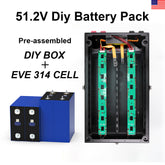

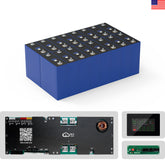

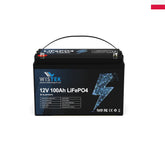
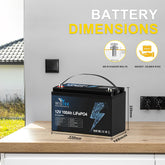

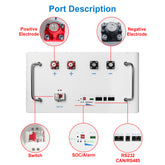
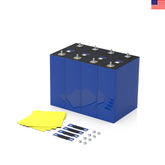
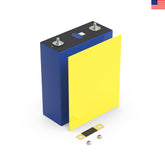
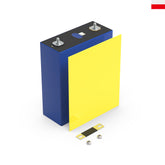

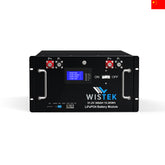
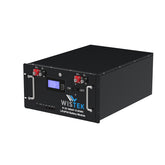
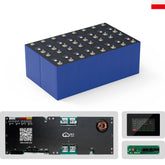








Leave a comment
All blog comments are checked prior to publishing